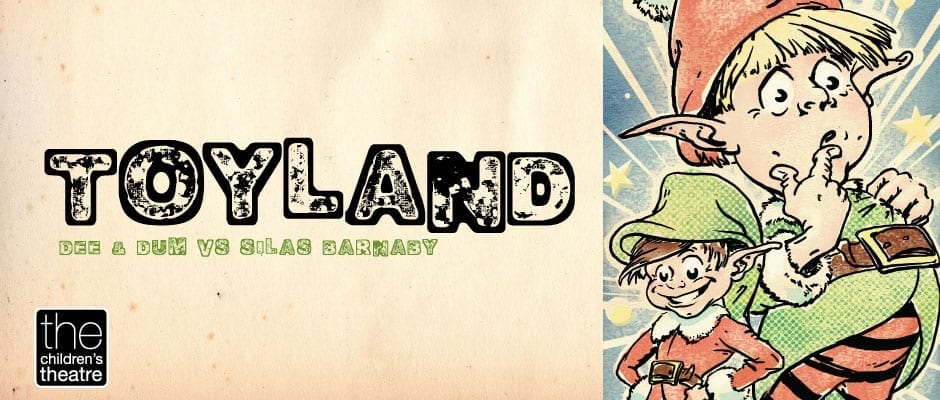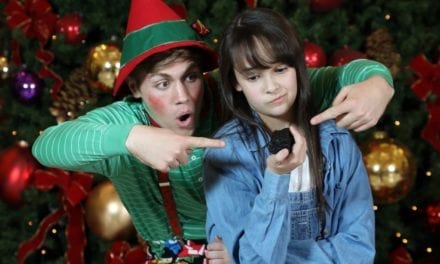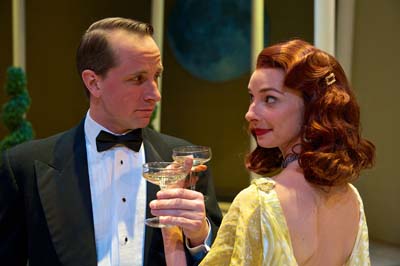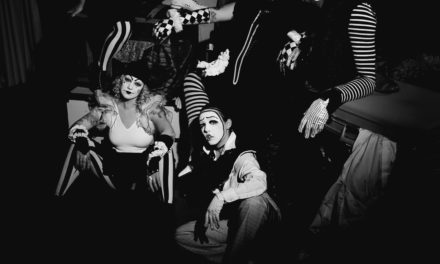SALT LAKE CITY — Since its first staging in 1903, Babes in Toyland has seen a lot of love. It’s memorable music, written by Victor Herbert, and charming script, written by Glen McDonough, have made their marks on stage and screen, all over the world. For many, it is an irreplaceable Christmas tradition, while for others it’s just one of the two VHS tapes you could watch at grandmother’s house during a holiday visit. Whatever it may be, many people have had some kind of contact with some version of Babes in Toyland. Out of the many adaptations of this classic tale, what makes The Children’s Theatre’s production of Toyland, Dee & Dum vs. Silas Barnaby different?
A new script from Joanne Parker carries Toyland out of 1903 and into the present. Mother Peep is a more modern-day mother in this script, using a more take-it-or-leave-it parenting style with her many children. The script is filled with plenty of humor and other gags that turn this fairy tale into a comedic romp through that “mystic, merry Toyland.” The director, Jennifer Hohl, meets the script head on, and creates a world where all this tomfoolery can take place. In some ways, it feels like an episode of Dudley Do-Right, which really works. The “fourth wall” is less of a wall, and more like a thin sheet of linen that is frequently torn, and usually in a good way. For example, some of the characters break out into a “look-what-I-can-do” type of tap dance that really doesn’t make much sense in the story, but it makes total sense in the cartoon-y world that’s been created. The huge cast comprised of both adults and children helped to create Toyland (the place), and the inclusion of the audience into that world only does good things for this production.
The world of Toyland is well established from the start, mostly due to the set design of Owen Richardson and James Parker. Despite it’s simple design, the scenic elements really set the stage (no pun intended) for the story that is about to be told. The red and white checkerboard motif that covers the floor provides a playful atmosphere that is right in line with the other elements of the production. Set pieces like Grandmother’s shoe and Barnaby’s domino house look as if they have been pulled straight out of a storybook. These elements were very effective in creating the world of Toyland. Upon entering the theatre, I felt like I was immediately transported to the world where all these fairy tales exist together.
The costumes, by Cathy Maure, Joanne Parker, and Emily Parker, are also instrumental in transporting the audience to Toyland. They are zany, yet appropriate. For instance, the Candy Lady has large, colorful pieces of candy that appear to be stuck to her head. It’s as if someone already licked them and sugar-glued them in her hair. Dee and Dum wear stockings and baggy tunics that tell us these characters are going to be very silly before they even open their mouths. Every costume on stage is perfect for the character they were designed for (though I think Santa could use a better coat). More importantly, the costumes build upon what the scenic design had already started. In no time at all, we find ourselves smack-dab in the middle of Toyland.
As mentioned before, there is quite a big cast, but out of this large cast emerge several wonderful performances that carry the production along. Angie Call’s Bo Peep and Bryan Hague’s Tom Tom are two of the strongest performances of the night. Call’s Bo Peep walks the careful line between melodrama and cheesy-ness, delighting the audience with her frantic and exasperated helplessness. Her singing voice is especially rich, and it immediately grabs my attention in her first song “I Can’t Do The Sum.” Hague’s Tom Tom is a wonderful compliment to Bo Peep. Tom Tom’s subtle overconfidence, combined with charming concern for the people of Toyland (especially Bo Peep) makes Tom Tom a perfect match for Bo Peep. The two are clearly comfortable with one another, and they create a fun relationship that really drives the entire production.
On the other side of Toyland (the evil side…), Brett Howell and Spencer Hohl deliver entertaining performances as villainous Silas Barnaby and his mean, little toady, Rumple. Howell’s Barnaby is very clearly a mean man, but I left wanting a little more evil from him. To continue with the Dudley Do-Right metaphor, I wanted a little more Snidley Whiplash in Silas Barnaby. Hohl’s Rumple seems to be omnipresent, and his crazy antics made him a lovable favorite among the audience. At times, however, I feel his hijinks needed to be reeled back, as I feel they detracted from the more important parts of the story. I think my sentiments on this matter are summed up in the statement made by the child sitting near me who, after a particularly kooky joke, giggled and said while shaking her head, “Oh Rumple…” Besides that, Rumple is always good for a hearty chuckle.
Despite some very minor hang-ups (cluttered blocking in large group scenes and inconsistent sound effects), this production is a very entertaining piece of theatre, capable of engaging people of all ages. I found myself laughing as hard (if not harder) than most of the children around me. What is really impressive about this production is its ability to simultaneously entertain a child of 4 and a child of 104. It’s layered with some pretty sophisticated comedy that will make it a very fun two hours for the whole family. There really is something for everyone waiting in this production of Toyland.
“Childhood joy land, mystic, merry Toyland, once you pass its borders you can never return again!” These final lyrics make a bold claim, and I’m living proof, that this claim is not true. I found the child within myself tonight, and I crossed that border back into Toyland. Audience members who attends Toyland, Dee & Dum vs. Silas Barnaby at The Children’s Theatre will find in themselves the child waiting to make their journey back to Toyland. But, even if you don’t, the laughter of all the children around you will be enough to make this production a highlight of your Christmas season.






